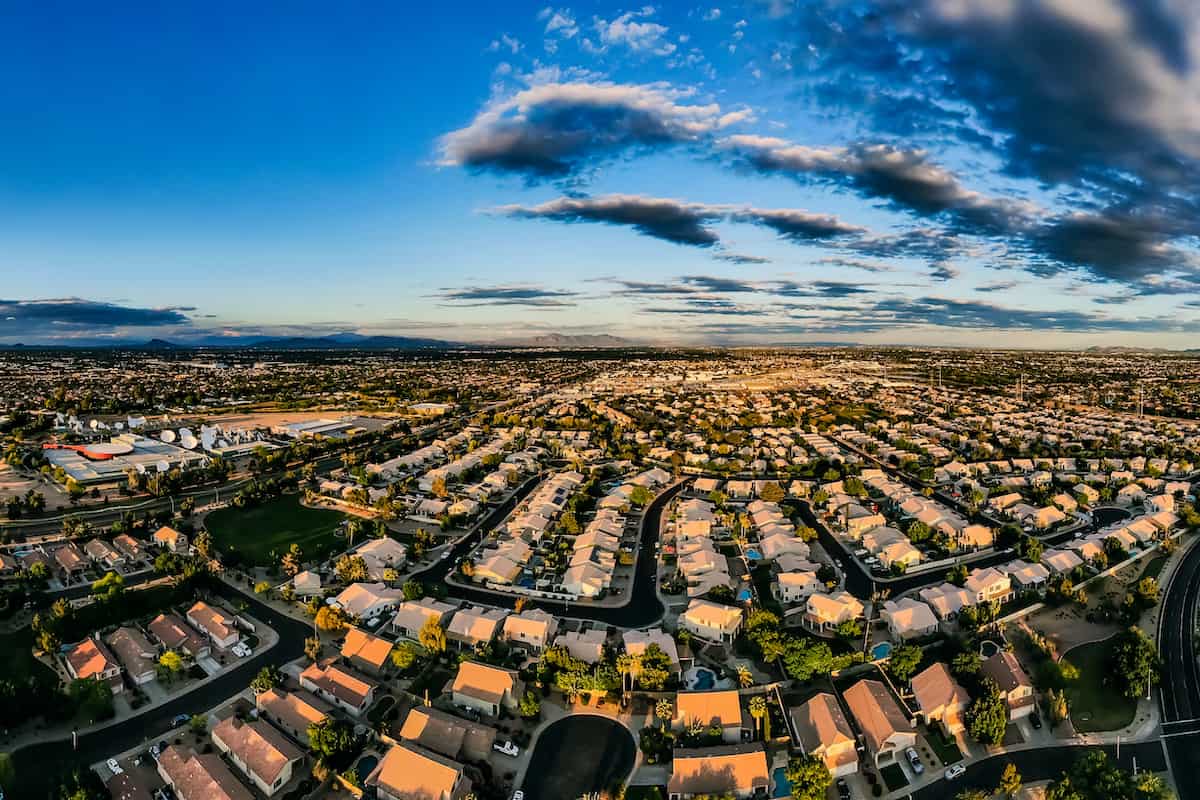New year, new rent price trends and a new report. The Rent.com Rent Report replaces the previous version from Apartment Guide. And Gilbert leads the nation for the biggest increase in one-bedroom rent prices year-over-year.
Let’s look at where rent prices stand today.
READ ALSO: Gilbert, Chandler among 10 best cities to buy an affordable home
National average rent price trends
Nationwide rent prices for both one-bedroom and two-bedroom apartments have increased significantly year-over-year at 22.1 percent and 18.3 percent, respectively. Month-over-month, prices have remained relatively flat.
• 1-BR: $1,683 (+0.2 percent from prior month / +22.1 percent year-over-year)
• 2-BR: $1,977 (+1.0 percent from prior month / +18.3 percent year-over-year)
State average rent price trends
State to state, rent prices are up compared to this time last year. All states have seen a significant increase in rent prices for both apartment types, but we’re starting to see some decreases, especially in two-bedrooms units.
• 1-BR: 97.8 percent of states are up and 2.2 percent of states are down
• 2-BR: 95.7 percent of states are up and 4.4 percent of states are down
City average rent price trends
In the country’s largest cities, rents are rising more often than receding. Here are the highs and lows from city-level rent changes.
One-bedroom city average rent price trends
The following cities have experienced the biggest increases in one-bedroom rent prices year-over-year. Three of these cities — Gilbert, AZ, Saint Petersburg, FL and Jersey City, NJ— have populations of 300,000 or less.
- Gilbert, AZ (+117.8 percent)
- Long Beach, CA (+58.3 percent)
- Cincinnati, OH (+51.8 percent)
- Mesa, AZ (+42.1 percent)
- Lexington, KY (+41.5 percent)
- Austin, TX (+41.4 percent)
- Saint Petersburg, FL (+41.1 percent)
- Anaheim, CA (+40.1 percent)
- Riverside, CA (+39.0 percent)
- Jersey City, NJ (+38.2 percent)
The following cities have experienced the biggest decreases in one-bedroom rent prices year-over-year. Four of these cities — Toledo, OH, Huntsville, AL, Chandler, AZ and Lincoln, NE — have populations of 300,000 or less.
- Toledo, OH (-23.0 percent)
- Huntsville, AL (-18.5 percent)
- Chandler, AZ (-17.9 percent)
- Kansas City, MO (-11.8 percent)
- Lincoln, NE (-11.5 percent)
- Miami, FL (-9.5 percent)
- Indianapolis, IN (-9.0 percent)
- Philadelphia, PA (-7.7 percent)
- Atlanta, GA (-7.0 percent)
- Cleveland, OH (-4.7 percent)
Two-bedroom city average rent price trends
The following cities have experienced the biggest increases in two-bedroom rent prices year-over-year. Five of these cities — Hialeah, FL, Glendale, AZ, Orlando, FL, Jersey City, NJ and Little Rock, AR — have populations of 300,000 or less.
- Jacksonville, FL (+44.8 percent)
- Albuquerque, NM (+41.3 percent)
- Hialeah, FL (+41.1 percent)
- Glendale, AZ (+37.4 percent)
- Mesa, AZ (+35.5 percent)
- Orlando, FL (+33.0 percent)
- Jersey City, NJ (+32.3 percent)
- Lexington, KY (+31.8 percent)
- Little Rock, AR (+31.5 percent)
- Dallas, TX (+31.2 percent)
The following cities have experienced the biggest decreases in two-bedroom rent prices year-over-year. Three of these cities — Lincoln, NE, Durham, NC and Scottsdale, AZ — have populations of 300,000 or less.
- Philadelphia, PA (-22.5 percent)
- Wichita, KS (-21.9 percent)
- Lincoln, NE (-18.4 percent)
- Durham, NC (-12.8 percent)
- Pittsburgh, PA (-12.6 percent)
- Kansas City, MO (-8.7 percent)
- Los Angeles, CA (-8.0 percent)
- Baltimore, MD (-7.1 percent)
- Minneapolis, MN (-7.0 percent)
- Scottsdale, AZ (-5.3 percent)
Overlap cities by average rent prices
Some cities reflect increases or decreases in rent prices across all bedroom types. We call these “overlap cities.”
Three cities in the top 10 have experienced year-over-year price increases in both one-bedroom and two-bedroom apartments:
Three cities in the top 10 have experienced year-over-year price decreases in both one-bedroom and two-bedroom apartments:
Rental industry trends
In addition to our pricing trends, here are a few key industry developments:
1. Apartment occupancy rates hit an all-time high
In December 2021, apartment occupancy rates across the U.S. hit the highest percentage on record at 97.5 percent. “I don’t think most people realize just how crazy that is,” Jay Parsons, RealPage’s deputy chief economist, said. The real estate industry generally considers 95-96 percent occupancy as full.
Renters are staying put and renewing their leases as the home buying market continues to struggle with low inventory. As we reported last month, renters preparing for homeownership are now giving up due to high prices driven by a lack of supply. A report from Redfin showed the number of homes that went up for sale in 2021 was down 23 percent compared to 2020.
2. The Pew Research Center records low migration numbers
The Pew Research Center found a record low number of moves after a mad dash at the beginning of the pandemic in March 2020. By spring 2021, most households were staying put. Despite headlines showing a mass exodus from U.S. cities, only eight percent of Americans actually moved homes between March 2020 and March 2021.
Still, recently published research from RentPath suggests property managers shouldn’t give into the “occupancy fallacy,” and warns the trends toward low vacancy and migration numbers may reverse in 2022. According to the survey, taken in November 2021, 60 percent of renters plan to search for a new home within six months.




